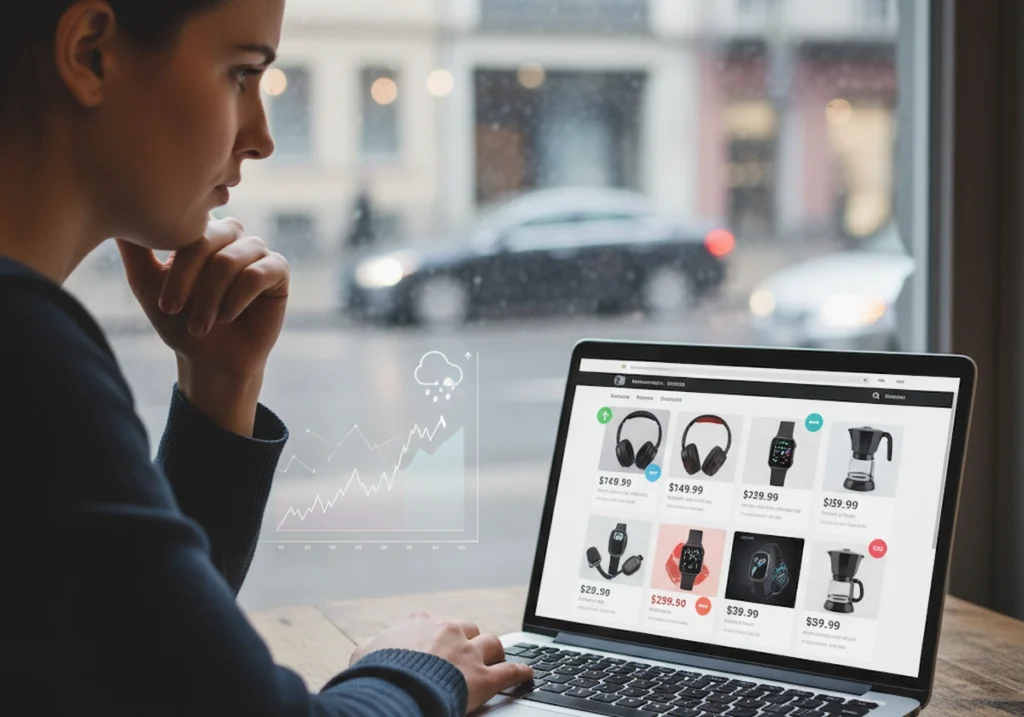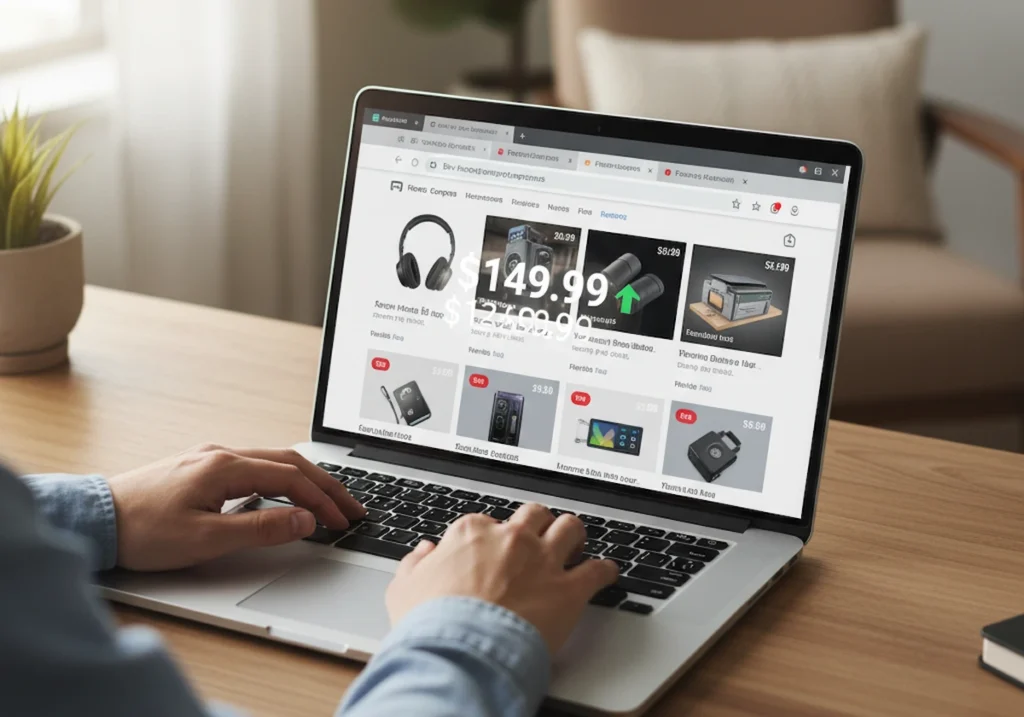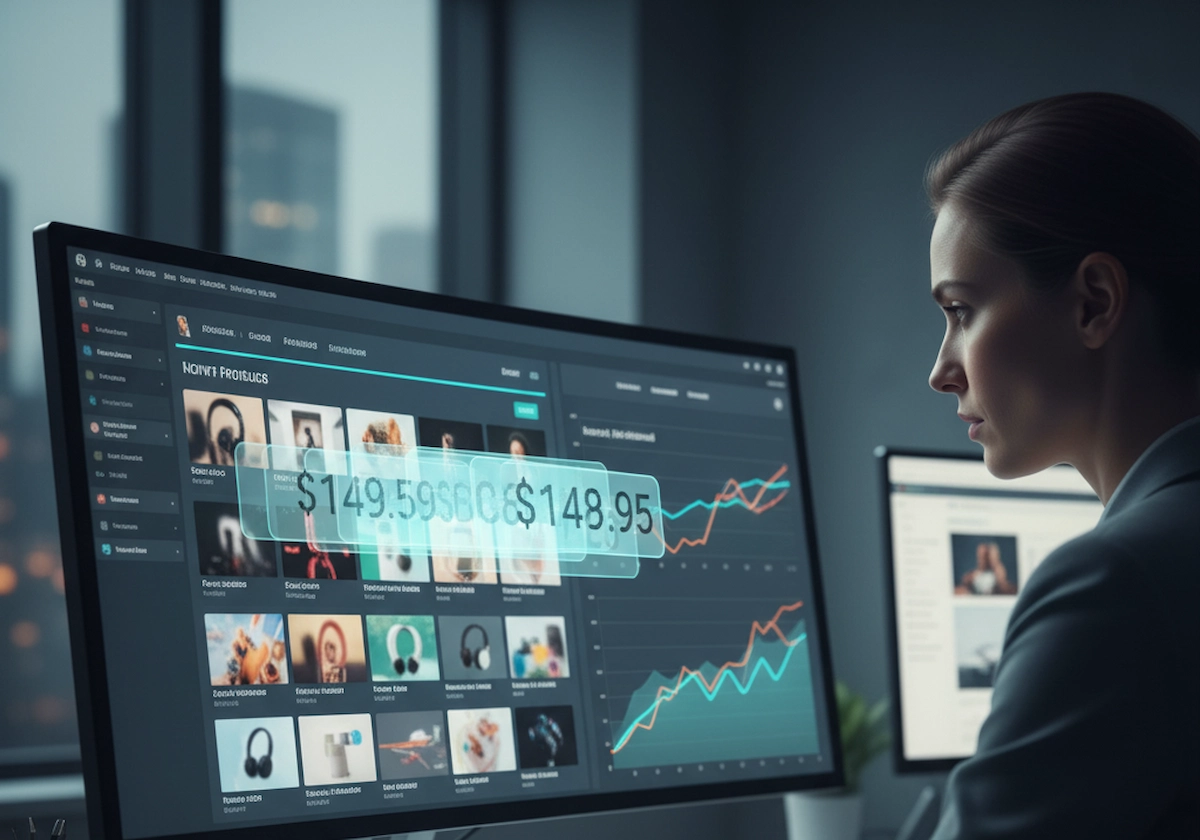Ever added something to your cart, only to find the price jumped when you came back? One minute, the hoodie costs $65; the next, it’s $78. Don’t worry, you’re not imagining things.
Dynamic pricing is the reason behind these frustrating price changes, and if you’re wondering why online retailers keep shifting prices on you, the answer might surprise you.
In this guide, we’ll break down dynamic pricing into simple terms so you’ll know what’s happening and how to avoid paying more than you should.
We’ll cover:
- What dynamic pricing actually is.
- The reasons online retailers rely on it.
- How it affects your shopping experience.
- Spotting it in action with practical tips.
- Proven strategies to get better deals.
We’ve helped thousands of shoppers save money using these exact tactics.
Read on to learn how dynamic pricing works and how to shop smarter.
Understanding Dynamic Pricing Online

Dynamic pricing online refers to prices that shift based on algorithms tracking everything about you and the market. Similar to surge pricing for rideshares, this pricing model is now used across almost every online store. Behind the scenes, algorithms continuously monitor demand, competitor prices, and your shopping patterns. Once they collect enough data, prices adjust in seconds.
For example, one shopper sees a laptop for $899 while another pays $950 for the identical model. It’s not a glitch or pricing error. This pricing model is intentional and calculated.
In fact, airlines pioneered dynamic pricing with ticket prices that shift hourly, but nowadays even grocery stores use it. The reason is simple: more data means more chances to maximise what each customer will pay.
Why Online Retailers Use Dynamic Pricing Strategies
Online retailers rely on dynamic pricing strategies to stay competitive and boost profit margins. The goal is to react faster than competitors while squeezing more value from every sale.
The process happens in three distinct stages:
- Stage 1: Monitoring Your Shopping Patterns – Everything you do online gets tracked, including which products you browse, how long you stay, and what device you’re on. Retailers collect this information constantly across millions of shopping sessions. To put this in perspective, online shopping now accounts for 12.7% of total retail sales in Australia as of June 2025.
- Stage 2: Software Crunches the Numbers – Implementing dynamic pricing uses advanced pricing software. This software scans competitor prices, monitors inventory levels, and tracks market demand constantly. Based on what it finds, prices rise when demand spikes and drop when stockpiles build up.
- Stage 3: Prices Change Automatically – The software makes instant pricing decisions to optimise revenue. If you’ve visited the same product multiple times, it might push the price higher. The entire approach balances moving inventory quickly with maximising profit margins for every shopper.
This whole system operates invisibly, yet it shapes every purchase decision you make.
The Business and Shopper Side of Dynamic Pricing
The way prices shift has real consequences for everyone involved. This creates a tension as retailers gain flexibility while shoppers deal with uncertainty. Both sides experience trade-offs that are worth understanding.
Here are three angles to consider.
Customer Satisfaction vs. Price Flexibility
Shoppers crave fairness above all. Seeing different prices for identical products triggers feelings of being cheated. Yet businesses argue they need flexibility to respond to supply, demand, and competition.
These opposing needs create constant friction. Either way, finding the right balance is tricky. If retailers push flexibility too far, they lose customers. Yet restricting changes too much means losing ground to competitors.

Building Customer Trust and Customer Loyalty
Trust is fragile in online shopping. When companies hide how their pricing works, shoppers naturally become suspicious, which is why transparency is so valuable. Brands that openly explain why prices fluctuate tend to keep customers coming back.
For instance, being upfront about higher prices during peak demand or lower prices during sales pays off in the long run.
Spotting Dynamic Pricing When You Shop
You can’t stop dynamic pricing, but you can outsmart it. The trick is recognising when retailers are testing different prices on you. These practical moves help you do exactly that.

- Browse in private mode to see real prices: Your browser history influences what retailers show you. To remove this tracking, switch to private mode when shopping. Once you’re in private mode, compare the advertised price to what you saw in regular browsing. The differences you spot reveal how much your browsing patterns affect pricing.
- Check prices across different devices and locations: Product prices shift based on what device you’re using. Mobile shoppers might see one price while desktop users see another. Location plays a role, too, with some showing different ticket prices based on where you’re browsing from. You can expose this easily by comparing the same item across your phone and laptop to spot these price-based differences.
- Watch for price drops after abandoning your cart: Retailers track when you leave items unpurchased. And they use this information to deploy time-based pricing tactics. The result? You might get emails with lower prices or spot discounts when you revisit the site hours later.
- Track prices over time with browser tools: Price tracking extensions show you when product prices fluctuate. They reveal patterns in price drops and spikes. This helps you identify when to buy and when retailers are testing higher prices. For maximum protection, combine private mode browsing with price tracking to gain complete visibility into pricing games.
Take Control of What You Pay Online
Dynamic pricing means you’re rarely seeing the same price as the next shopper. Retailers use sophisticated software to adjust what you pay based on dozens of factors. Understanding how this works puts you in a stronger position to avoid paying more than necessary.
This guide explained dynamic pricing mechanics, the three-stage process retailers use, and practical tactics to spot price manipulation. From browsing in private mode to tracking price fluctuations, you now have strategies that level the playing field when shopping online.
Start saving today. Check out Unsubscribe Deals for exclusive discounts and pricing alerts that keep you ahead of dynamic pricing games.
